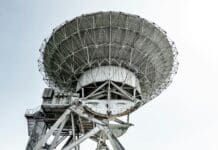This post is also available in:
 עברית (Hebrew)
עברית (Hebrew)
Star Catcher Industries revealed its plans to build the world’s first space-based energy grid to power satellites, aiming to advance space operations by providing a reliable and abundant power source to LEO satellites. The first satellite of this new constellation could be in orbit by next year.
The market of beaming energy from space to Earth is quickly expanding, with American company Caltech successfully demonstrating power beaming to Earth, and British company Space Solar demonstrating a 360-degree power transmission system. The main appeal of this tech is its ability to provide uninterrupted energy, unlike its Earth-based tech.
However, all initiatives so far focused on Earth’s energy demands and did not consider satellite power options. Star Catcher’s unique energy grid will beam substantial broad-spectrum power to spacecraft in LEO and beyond.
According to Interesting Engineering, the network will consist of “power node” satellites positioned in LEO (around 1,500 km above the Earth) that will harness solar power and efficiently transmit it to customer spacecraft. This network will supply energy at higher intensities than sunlight, allowing spacecraft to generate up to 10 times more power than the existing solar arrays.
As the demand and use of LEO satellites grows, Star Catcher predicts a dramatic increase in power needs that current space power capacity cannot supply. This new technology is expected to dramatically increase space power by providing high-energy input to solar arrays, enabling satellites to operate longer and save money.
Co-founder, President, and CEO of Star Catcher Andrew Rush said in a press statement: “Power infrastructure is the foundational building block of civilization and industry; our goal is to expand that foundation into LEO and beyond with our in-space power grid and service… Being able to buy power for your spacecraft whenever and wherever you need it in LEO will expand opportunity and accelerate humanity realizing the potential of the second golden age of space.”
The company plans to validate the technology through ground trials, after which it will conduct an in-orbit demonstration before fully launching the commercial service. The company’s release statement claimed that once deployed, satellite operators could “shift to a shared infrastructure mindset where power consumption will not be constrained by what satellites bring with them.”


























